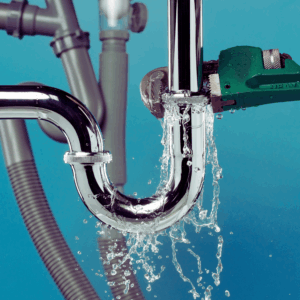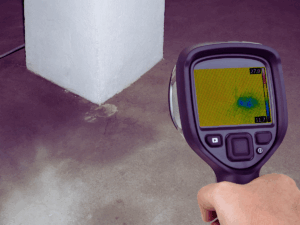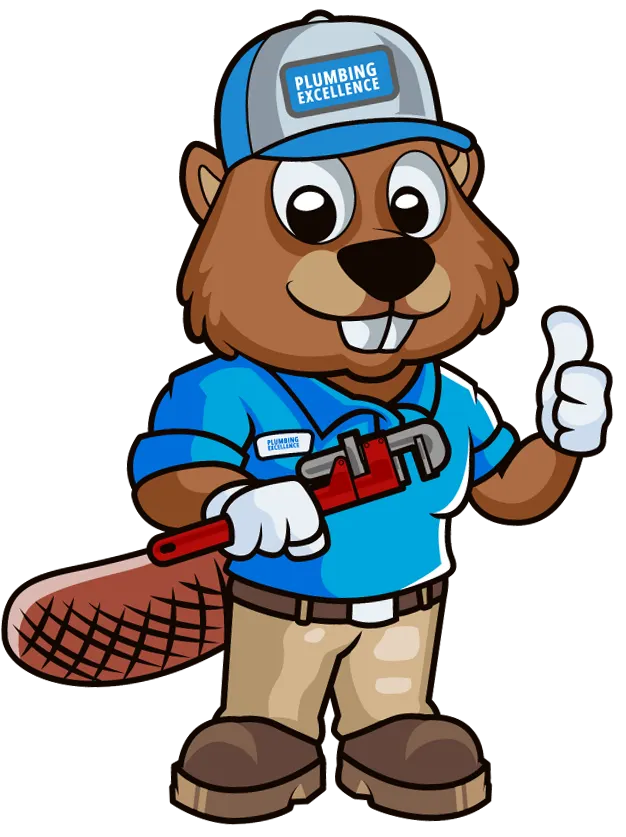 The most common places for plumbing leaks in homes are toilets, faucets, sinks, showers, tubs, and water heaters. Leaks can also happen in washing machine hoses and hidden pipes like slab or sewer lines.
The most common places for plumbing leaks in homes are toilets, faucets, sinks, showers, tubs, and water heaters. Leaks can also happen in washing machine hoses and hidden pipes like slab or sewer lines.
These areas often experience wear, pressure, or corrosion, so you should check them regularly to prevent costly damage.
This article explains why leaks matter, where they happen most often, how plumbers find hidden ones, and what you can do to prevent them.
Why Plumbing Leaks Are a Serious Problem
Leaks are more than a nuisance. Even a slow drip can waste hundreds of gallons of water each year and create long-term problems.
- Water waste and rising bills – A running toilet or dripping faucet can raise utility costs fast.
- Hidden structural damage – Water seeps into walls, floors, and ceilings, weakening materials.
- Mold, mildew, and health issues – Moisture creates a breeding ground for harmful growth.
- Foundation and yard erosion – Underground leaks wash away soil and damage concrete slabs.
7 Common Places Home Plumbing Leaks Occur
Leaks happen in predictable places. Knowing where to look makes it easier to stop problems early.
1. Toilets
Toilets are one of the most frequent sources of leaks. Worn flappers, faulty fill valves, or cracked tanks let water escape. Signs include ghost flushing, constant running, or puddles near the base.
2. Faucets and Showerheads
A dripping faucet wastes gallons every day. The usual causes are worn washers, O-rings, or cartridges. Showerheads may leak where the head connects to the pipe or inside the handle.
3. Under Kitchen and Bathroom Sinks
Loose fittings, clogged drains, or corroded pipes often cause leaks under sinks. Open cabinets and check for dampness, stains, or musty odors.
4. Showers and Bathtubs
Water can leak around grout, caulking, or hidden plumbing connections. Look for stains on walls or ceilings below bathrooms. Even a small gap in caulk lets water through.
5. Water Heaters
Tanks weaken with age, and corrosion or high pressure causes leaks. Watch for puddles near the base, dripping valves, or hissing sounds. Addressing a water heater leak quickly prevents flooding.
6. Washing Machine Hoses
Rubber hoses deteriorate over time and may burst under pressure. Replace them with braided steel hoses every five years for added safety.
7. Hidden Lines: Sewer, Slab, and Foundations
Pipes buried under soil or concrete can crack from shifting ground, tree roots, or age. Warning signs include soggy soil, foundation cracks, and foul odors. These hidden underground leaks often require professional detection.
How Plumbers Detect Hidden Leaks
 Plumbers use specialized tools to locate leaks without unnecessary damage to your home.
Plumbers use specialized tools to locate leaks without unnecessary damage to your home.
- Visual inspection – Checking walls, ceilings, and outdoor soil for water stains or soft spots.
- Acoustic leak detection – Sensitive equipment listens for the sound of escaping water.
- Thermal imaging cameras – Detect temperature changes caused by moisture.
- Video pipe inspection – Small cameras inserted into pipes reveal cracks or blockages.
- Pressure testing – Identifies leaks by measuring how fast pressure drops in a closed system.
How to Prevent Plumbing Leaks in the Home
Prevention saves money and avoids costly repairs. A few proactive steps can make a difference.
- Routine plumbing inspections – Schedule yearly checks with a licensed plumber.
- Replacing old hoses and worn washers – Swap out failing parts before they break.
- Installing water pressure regulators – Protect pipes from stress caused by high pressure.
- Sealing grout and caulk – Maintain bathroom surfaces to stop water seepage.
- Using smart leak detection devices – Sensors provide alerts before damage spreads.
FAQs About Plumbing Leaks
What are the most common plumbing leaks in homes?
Toilets, faucets, under sinks, showers, water heaters, washing machine hoses, and underground lines are the most common.
How do I know if I have a hidden plumbing leak?
Check for sudden spikes in water bills, reduced pressure, damp spots on walls or floors, or sounds of running water when fixtures are off.
Can small plumbing leaks cause major damage?
Yes. Even slow drips rot wood, damage drywall, and lead to mold growth if ignored.
How often should I check for plumbing leaks?
Inspect high-risk areas every few months and schedule a professional plumbing inspection once a year.
When to Call a Professional Plumber
Some leaks are easy to spot. Others hide for months. Call a plumber if you can’t find the leak source, if water damage appears in walls or ceilings, if utility bills spike without reason, or if multiple fixtures lose pressure at once.
Stop Plumbing Leaks Before They Wreck Your Home
 Leaks grow worse the longer they’re ignored. Looking for leaks in common places helps you find problems early. However, professional plumbers have the tools to find and fix hidden leaks.
Leaks grow worse the longer they’re ignored. Looking for leaks in common places helps you find problems early. However, professional plumbers have the tools to find and fix hidden leaks.
Call Buddy’s Plumbing Excellence in Akron, OH and nearby areas for expert leak detection and repair. You’ve got a Buddy in plumbing.
